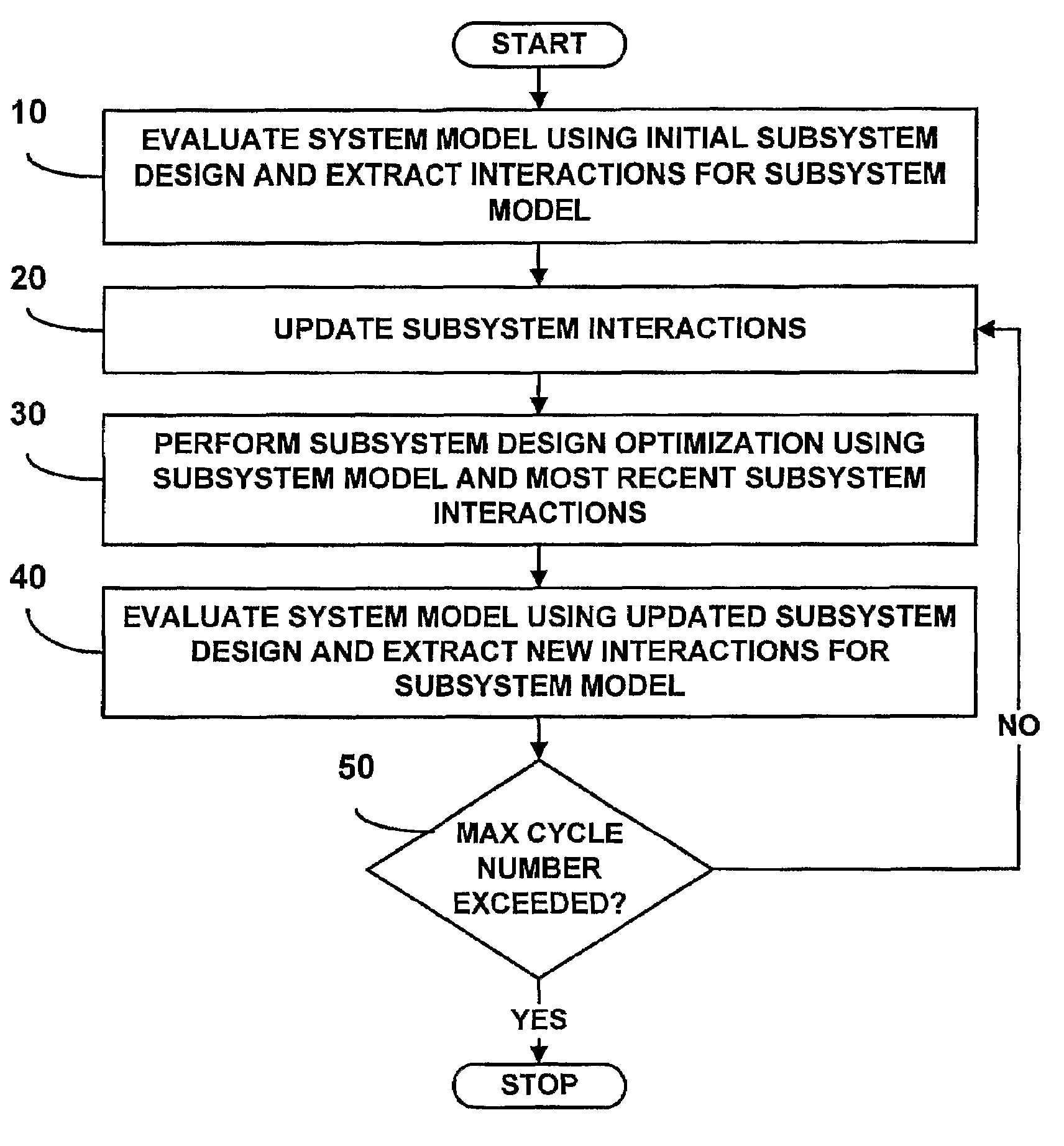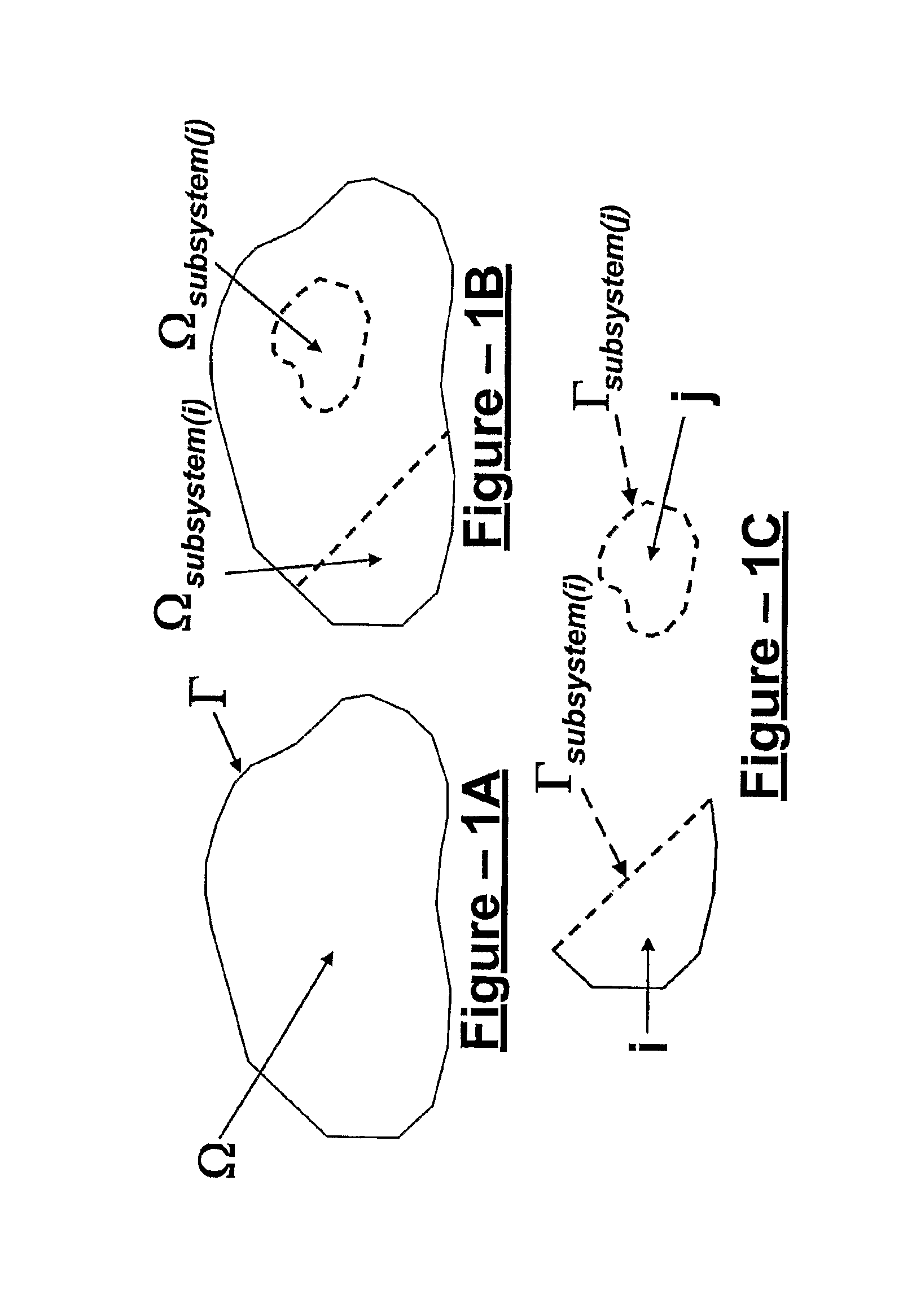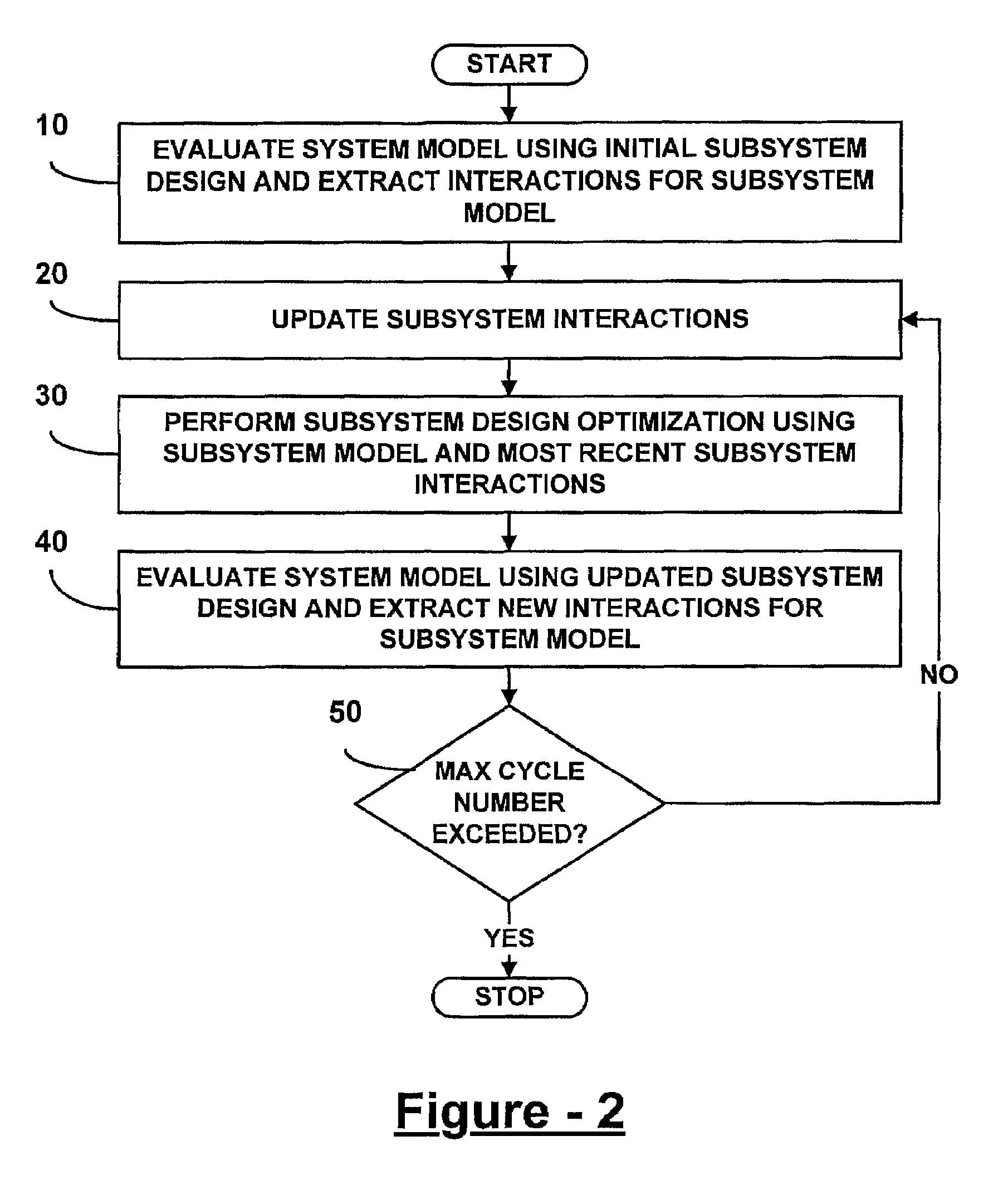Design optimization system and method
a design optimization and optimization system technology, applied in the field of design optimization, can solve the problems of inability to identify the best design, difficult or computationally expensive calculation of these derivatives, and inability to achieve the convergence characteristics of many classes of problems, and achieve the effect of less time and higher performance and robustness
- Summary
- Abstract
- Description
- Claims
- Application Information
AI Technical Summary
Benefits of technology
Problems solved by technology
Method used
Image
Examples
Embodiment Construction
[0017]The following description of the preferred embodiment(s) is merely exemplary in nature and is in no way intended to limit the invention, its application, or uses.
[0018]We will first consider a particular special case of the broad problem class of interest for the purpose of describing the fundamental aspects of the new approach. In a subsequent section this approach will be generalized in several meaningful ways.
[0019]In large complex engineered systems (including structural, fluidic, thermal, acoustic, electro-magnetic, etc.), often only a subsystem or a small part of the system design needs to be modified to adapt or improve performance in some way. For example, to improve frontal crash safety in an automobile, an engineer might focus design changes on only the vehicle lower compartment rails and the bumper. To modify the lift or drag characteristics of an airplane, an aerospace engineer might focus only on the leading or trailing edge of a wing.
[0020]Referring to FIG. 1A, c...
PUM
 Login to View More
Login to View More Abstract
Description
Claims
Application Information
 Login to View More
Login to View More - R&D
- Intellectual Property
- Life Sciences
- Materials
- Tech Scout
- Unparalleled Data Quality
- Higher Quality Content
- 60% Fewer Hallucinations
Browse by: Latest US Patents, China's latest patents, Technical Efficacy Thesaurus, Application Domain, Technology Topic, Popular Technical Reports.
© 2025 PatSnap. All rights reserved.Legal|Privacy policy|Modern Slavery Act Transparency Statement|Sitemap|About US| Contact US: help@patsnap.com



